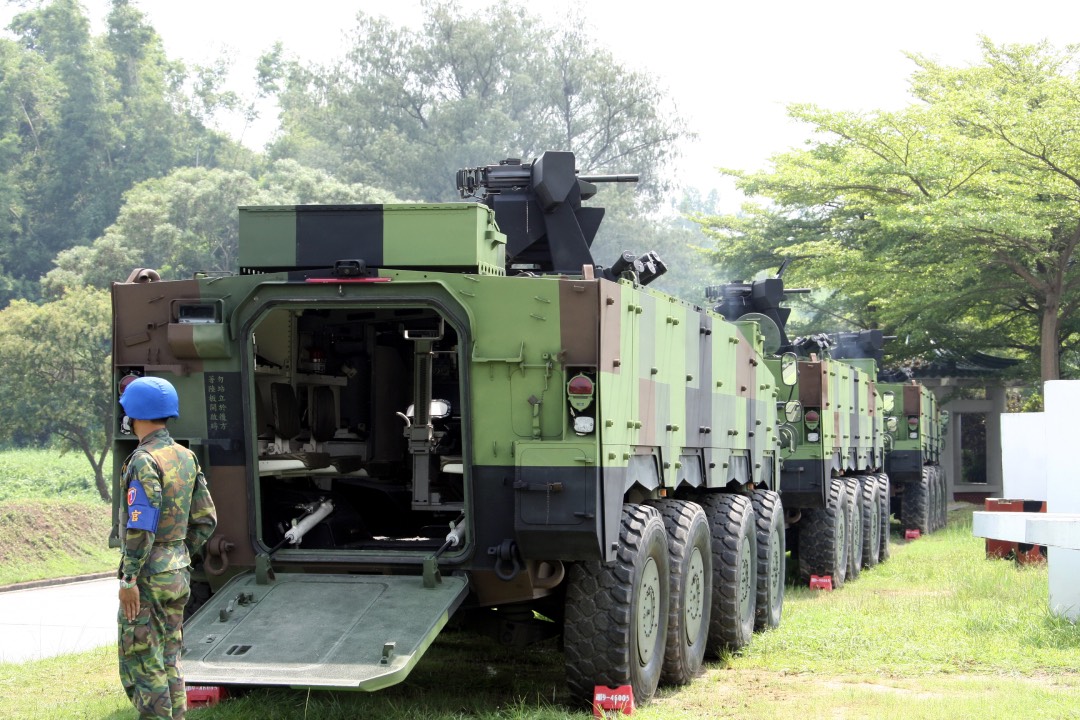Multi-role combat vehicles (MRCVs) give a good range of options (and savings) over fleets of role specific combat vehicles.
The main battle tank, infantry fighting vehicle, and self-propelled howitzer are commonly looked upon as defining an army’s combat capabilities. These are, however, highly mission role specific systems which also carry a considerable support burden. Their development and manufacture also demand investment and industrial capacity not always readily available. Many counties, including those in the Asian-Pacific, therefore focus on a more utilitarian approach to addressing their combat vehicle requirements – the Multi-Role Combat Vehicle (MRCV). These are usually a six or eight wheeled platform with armoured body and utilising available local production capabilities. Collaborating with established foreign combat system firms have been used to ‘jump-start’ some domestic developments. The resulting vehicles address the broader roles, missions and circumstances of these militaries, such as peacekeeping, while providing systems that are more readily supported while contributing to the local economy and the possibility of sales in other markets. In fact, MRCVs reflect the majority of combat vehicles in use in the region.
Anoa – Indonesia
Indonesia has been developing an indigenous defence industry since 2000. One of its premier efforts has focused on combat vehicles through the company PT Pindad. The Anoa, a 6×6 wheeled armoured combat vehicle named after a local water buffalo, has been one its success stories. The development was prompted by Indonesian Army (Tentara Nasional Indonesia Angkatan Darat – TNI-AD) interest and facilitated through collaboration with France’s GIAT, which explains the similarity to the Véhicule de l’avant blindé (VAB), which is also in Indonesian service. However, the APS-3 first publicly viewed in 2006, though also a monocoque hull has, in fact, several improvements over its French ‘cousin’. These include an independent suspension with new torsion bars and large 360-degree weapon station on the left side behind the forward commander’s position. It uses the widely used Renault MIDR 06-20-45 engine and ZF 6FIP502 automatic transmission delivering 320hp. Anoa has proved both dependable and adaptable in filling a range of mission roles including personnel carrier, command, logistics, recovery, mortar carrier, and reconnaissance. Over 400 currently are in service with the TNI-AD. Further development has resulted in the BADAK fire support version. Mounting the CMI Defence CSE 90LP MKIII two-person turret with a 90mm low-pressure rifled gun, it is adapted with a double wish-bone suspension to accommodate gun firing.
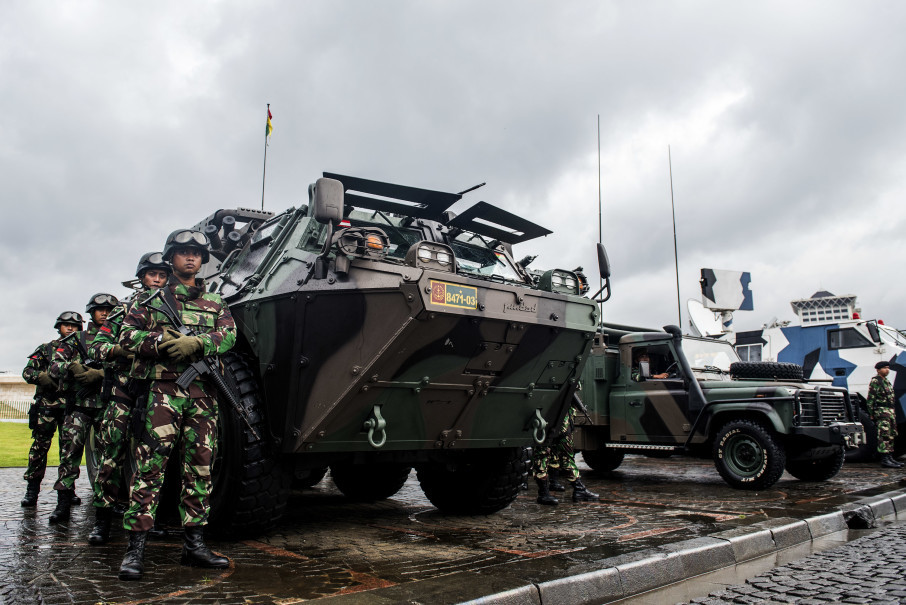
K806 and K808 – Korea
The Republic of Korea Army (ROKA) realised a requirement for a highly mobile response force for rear area security and to support its heavier units. Competitors for this need included Doosan’s Black Fox, Samsung Techwin’s MPV, and Hyundai Rotem’s KW1 with the last selected. Low-rate production began in October 2016 was later increased to provide 100 16 tonne 6×6 K806 and 500 20 tonne 8×8 K808 armoured combat vehicles. An order for a third batch of vehicles was announced on 29 September 2020 valued at $348.6 million. The vehicles share many performance characteristics including the 420hp Hyundai diesel power pak, automatic transmission and independent ISU suspension with central tyre inflation and run flat tyres.
The K806 can be configured with a .50 machine gun or 40mm AGL cupola or Remote Weapons System (RWS) as a nine-soldier personnel carrier, as a 30mm turreted ACV, a mobile gun with 90mm low pressure cannon or for medical evacuation. A larger and more protected K808 has rear water jets allowing swimming. It not only accommodates the weapons of the K806 but can act as a 120mm mortar carrier and command post. In June 2020 the Army also ordered the K808 configured with the K30 Biho twin anti-aircraft system from Hanwha with first delivery in December 2021. The high commonality across the K806 and K808 fleets will also offer significant logistics, maintenance and support benefits.
It is worth noting that the Peoples Republic of Korea (North Korea) has also shown its interest in developing and fielding indigenous wheeled combat vehicles. Local designed 6×6 and 8x8s with a twin 14.5 machinegun turret, a rear engine, and side troop doors resembling the Russian BTR080 have been observed although the production scale is unknown. Then during the 10 October 2020 military parade in Pyongyang an obviously new and different 8×8 combat vehicle was shown in two versions. The first had a large calibre cannon in an overhead turret while the second had five anti-tank guided missiles. It remains unclear whether a chassis for a broader multi-role vehicle series will be offered.
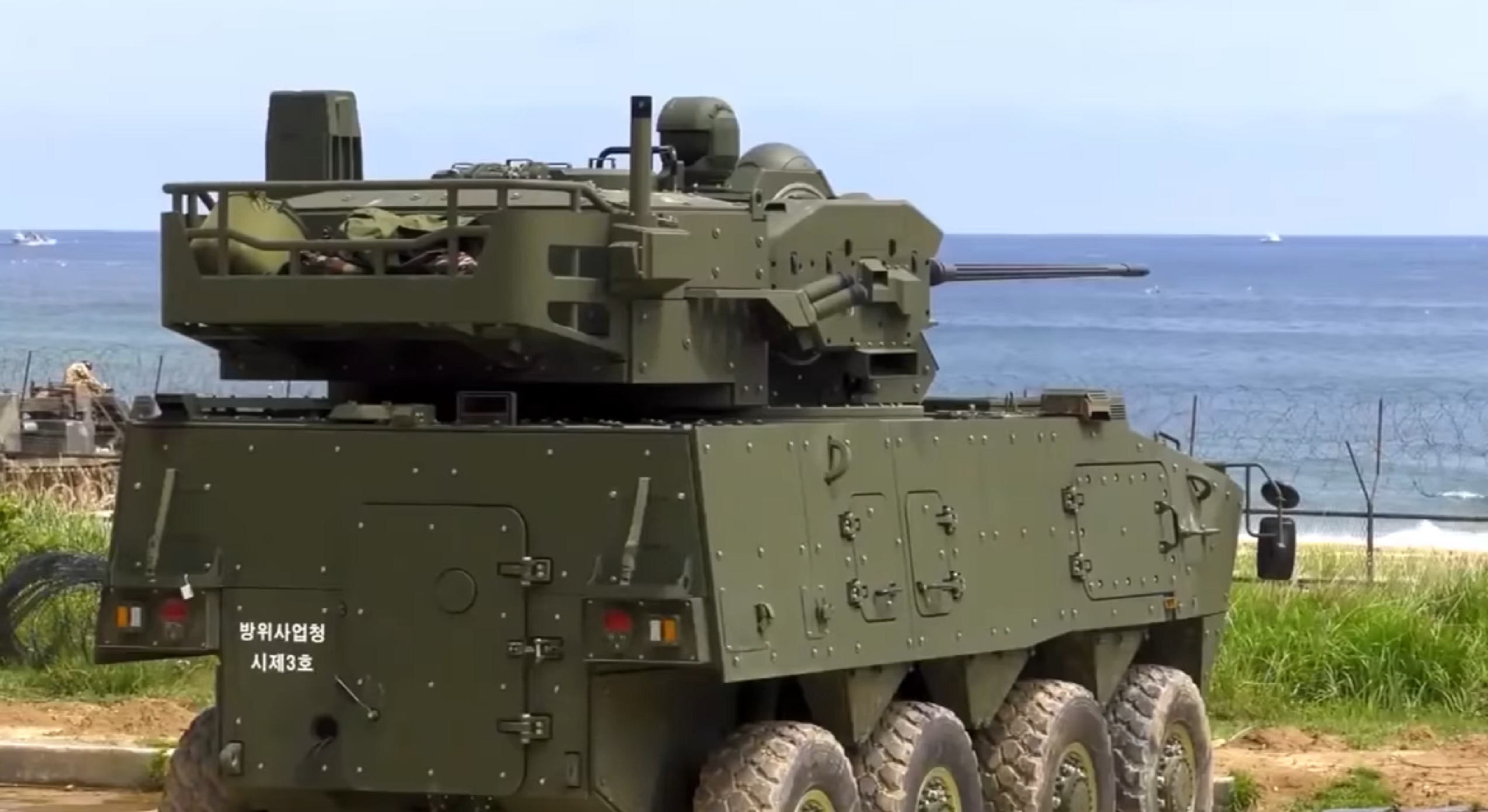
AV8 Gempita – Malaysia
Malaysia is also encouraging domestic defence manufacturing by pursing locally developed multirole armoured vehicles. The firm DRB-HICOM Defense Technologies, known as DefTech, established a relationship with Turkey’s FNSS Defense Systems in which the later provided military vehicle design and development assistance. The collaboration led to the AV8 Gempita (Thunder) an 8×8 wheeled armoured vehicle with a modular design which is based on FNSS’s PARS 8×8. AV8 uses aluminium and steel composite armour with add-on protection against 14.5mm (STANAG 4569 Level 4) on the sides and front. A turbocharged 550hp Deutz engine linked to an automatic transmission provides a power to weight ratio of up to 19.6hp/ton which, coupled with its independent air suspension, offers a road speed of up to 100 kilometres per hour (km/h) (62 miles per hour). It is swim capable with two rear shrouded waterjets providing a water speed of 3.2 knots (6km/h). Other features include dual channel central tyre inflation, run flat tires, air conditioning, NBC protection, land navigation and front and rear thermal and CCD cameras.
In common with most multirole vehicles AV8 has a roomy interior with a rear compartment that can be configured for various mission types. This is further facilitated by open architecture vehicle electronics offering internal and external voice, data, and video exchange, platform status management, battlefield information management, and improved situational awareness. Twelve mission variants of AV8 have been provided. These range from infantry carriers to anti-tank missile, mortar, command, RSTA (reconnaissance surveillance and target acquisition), ambulances, recovery, maintenance team, engineering and signals versions. The infantry combat versions use the common chassis but mount either a 12.7mm remote weapon station, a 25mm Bushmaster autocannon Sharpshooter one-man turret, or a Denel South Africa LCT30 two-man turret with 30mm GI30 cannon, digital fire control and day/night sights. Around 54 LCT30 in Malaysian service include the ZT3 Ingwe laser beam riding anti-tank guided missile. Overall, the development and fielding of AV8 is providing a versatile and capable complement to the army’s PT-91M main battle tanks and ACV-300 tracked combat vehicles.

Deliveries of a first batch totalling 257 systems was completed in 2021 while a second order was planned for 2022. There is the possibility that this second requirement, one as large as 400 vehicles, might be recast as a 6×6 for which an initial requirement open to international competition was announced in September 2021. This potential tender already has the attention of PT Pindad with its Anoa in a 6×6 version, Hyundai Rotem with K806, Hanwha Defense with AVP Engineering with TIGON and General Dynamics Land Systems Canada. In addition, DefTech could again work with FNSS which recently show cased a PARS III 6×6 with front and rear axle steering further improving performance.
The joint development by South Korea’s Hanwha and Malaysia’s AVP Engineering appears, at least initially, targeted to Malaysia’s 6×6 requirement. It’s TIGON is based on the Black Fox, the unsuccessful contender for South Korea’s wheeled combat vehicle with Doosan DST (and Samsung Techwin) being acquired by Hanwha. Black Fox (considered as its second generation) was, however, successfully offered to Indonesia, renamed Tarantula, as a fire support vehicle with a Cockerill CSE 90mmLP gun. TIGON’s wheeled 6×6, the third generation, uses a double-wishbone suspension with wide tires and has two forward steering axles spaced from its single rear axle. Rear waterjets offer swimming. The basic welded steel hull can be supplemented by bolted add-on armour up to Level 3 while the semi-vee bottom form meets STANAG 4569. With a 525 turbocharged Caterpillar power pak and Allison 4500SP electronically controlled automatic transmission giving 100km/h (62mph) road speed, rear water jets provide swimming at 4.5kts (8.5km/h). The vehicle has been designed to allow variants up to 24-tonne GVW which is facilitated by the spacious interior space. TIGON has undergone extensive field testing since 2018 in Asia and the Middle East. A Hanwha representative indicated it “passed all test categories with the highest score in the later despite rugged terrain and 50C degree temperatures”.
Type 96 Replacement – Japan
Japan’s Ground Self Defense Force (JGSDF) announced in August 2021 it had selected three designs as competitors to replace its Type 96 8×8 armoured carrier. General Dynamics Land Systems withdrew itself in November leaving Mitsubishi Heavy Industries and Finnish Patria as competitors. Although designated by the JGSDF as an armoured personnel carrier, the Type 96 configuration and field employment reflect many of the properties of an MRV. Patria’s entry is its AMV XP (extra payload, extra performance, extra protection) which has been undergoing tests in Japan. The AMV is not only in service with eight countries but is both combat proven and had full local manufacturing successfully transitioned in at least two occasions.
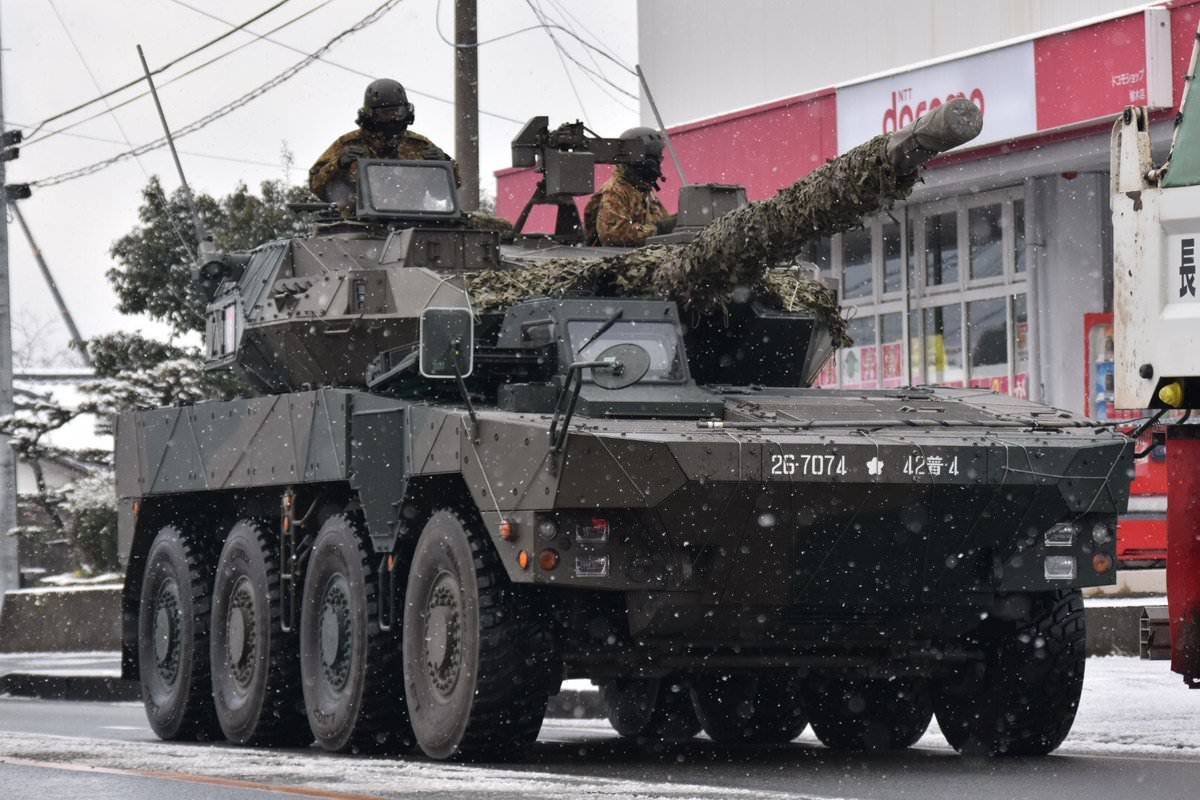
Mitsubishi is reconfiguring its MCV fielded in 2016 with a 105mm tank cannon and a rear troop compartment as its entry. Called the Mitsubishi Armoured Vehicle (MAV), it is all wheel drive with the company’s 4MA-4 cylinder 536hp diesel and independent suspension with space for two crew and up to nine passengers. Notably Mitsubishi had already received a contract in December 2019 to develop prototypes of its Type 16 MCV reconfigured as an infantry combat vehicle, a reconnaissance combat vehicle, and a manoeuvre mortar combat vehicle as part of a JGSDF Common Tactical Wheeled Vehicles (CTWV) project. Prototypes are to be delivered in March 2022.
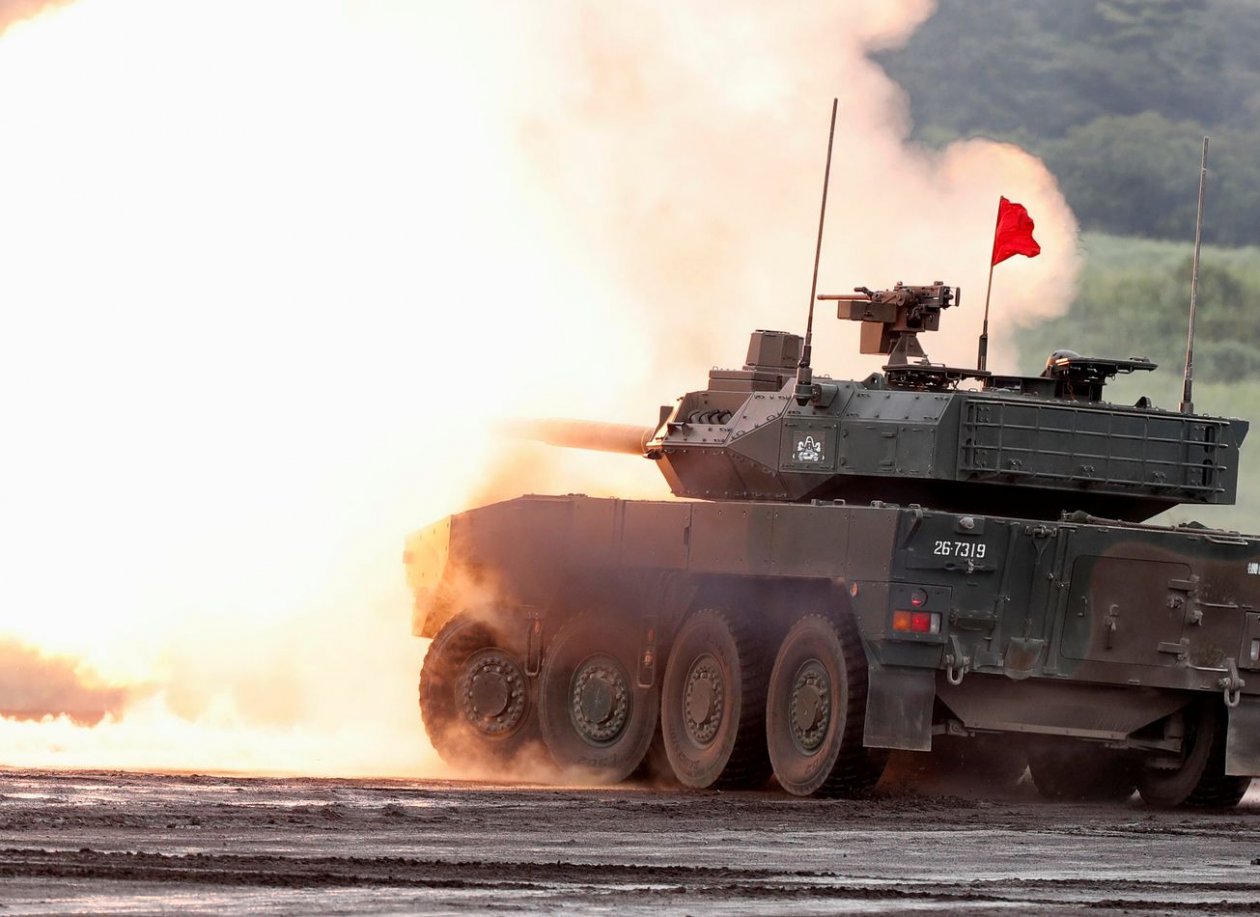
Boxer – Australia
The winner of Australia’s Land 400 Phase 2 Combat Reconnaissance Vehicle (CRV) requirement happens to use a platform, the Rheinmetall/ARTEC Boxer, that could be considered as one of today’s up and coming multi-role vehicles. Utilising an innovative ‘mission module’ approach it has a drive platform composed of the chassis, power pak, suspension and driver station. It contains the 711hp MTU 8V199 engine (growing to 805hp in the latest A3), eight-wheel drive and steering, independent double wishbone suspension, and large tyres with run-flat and CTI. On to this platform a variety of interchangeable mission modules can be installed. The Boxer has demonstrated its performance and reliability including service in Afghanistan. The payload and platform stability have also allowed it to extend its adaption to mission roles not typically anticipated in prior multi-role vehicles. These include as a self-propelled 155mm howitzer, the Boxer RCH155, a 105mm direct fire cannon turreted vehicle, a mobile bridge layer, and a highly mobile weapon locating system (WLS) platform with Saab’s Arthur radar.
The current Australian Army requirement consists primarily of a reconnaissance variant with a Lance 30mm autocannon – 133 have been ordered. However, the balance, according to the MoD, will include command and control, surveillance, joint fires, ambulance, and battlefield repair and recovery models. This collection of variants is the broadest in any of the current other Boxer users, though it may well be topped by the British Army which in July 2018 announced its intent to order up to 600 Boxers with the possibility of fielding as many as 1,500. Still as Gary Stewart, managing director of Rheinmetall Defense Australia stated regarding the Australian programme: “Rheinmetall’s investment in the MILVEHCOE (manufacturing and support centre) … is creating a strong sovereign military vehicle industry”. This is amplified by the programme’s incorporation of over 40 indigenous content providers contributing to the vehicle. As a result, Boxer has a potential to offer a local Asian-Pacific contender in other multi-role requirements in the region.
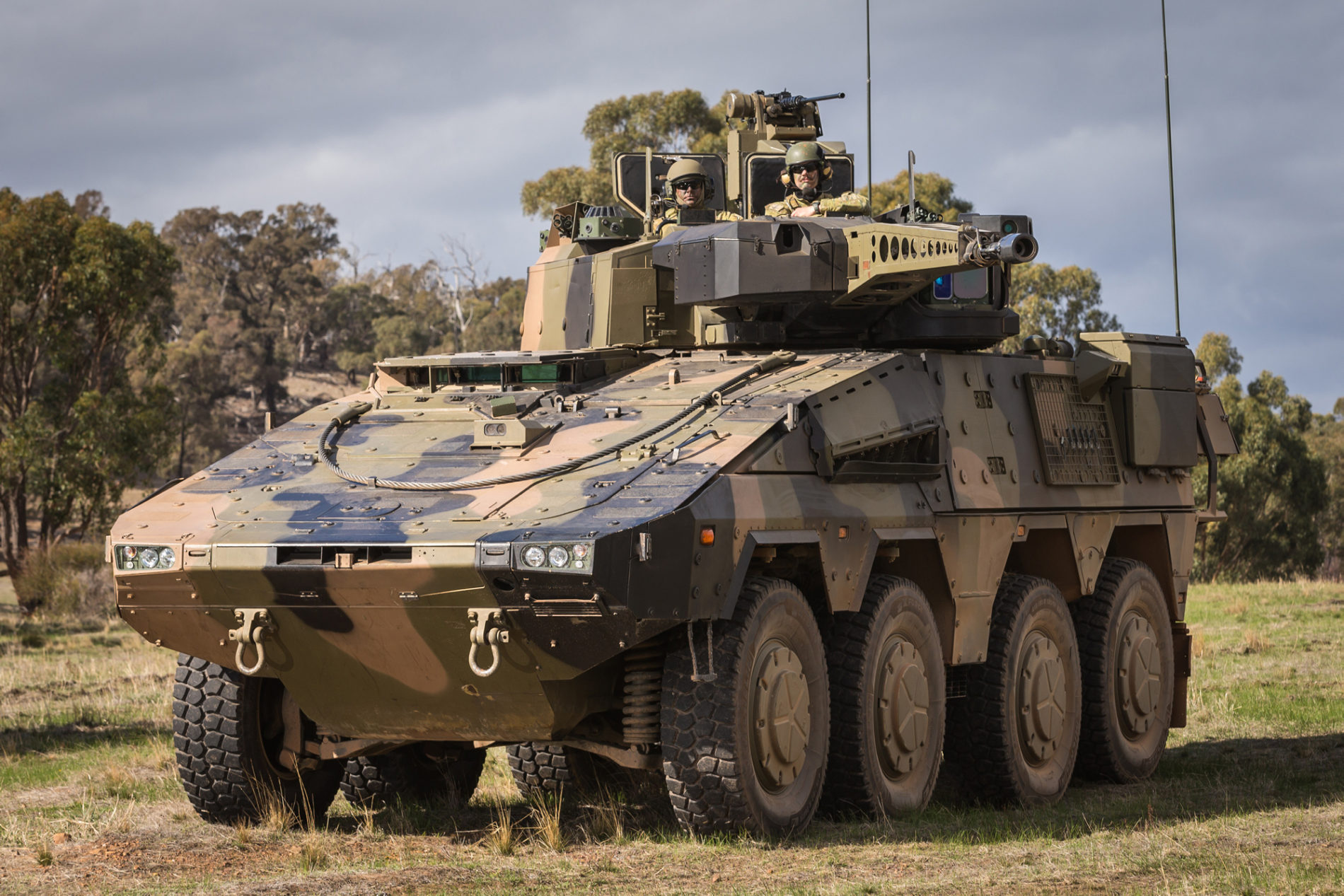
Yunpao – Republic of China (Taiwan)
The Republic of China’s Yunpao Clouded Leopard 8×8 began as the Taiwan Infantry Fighting Vehicle with two-man 30mm MK44 auto-cannon turret. It has subsequently added additional variants establishing itself as a multi-role platform. Other variants are the CM-33 with 40mm auto-grenade launcher / 7.62mm machine gun remote station, plus command and reconnaissance models. In addition, Leopard II has been displayed with a 105mm tank cannon (CM-37 Black Bear) and a mounted mortar with a howitzer integration understood to be in development. These will equip the new combined-arms battalions.
PLA – Type 8 and Type 90/92
The Asian military which has most embraced the multi-role combat vehicle is the People’s Republic of China’s People’s Liberation Army (PLA). This is a factor of economics and efficiency driven by the numbers of vehicles necessary to fill its needs. Having common platforms contributes to simplifying training, maintenance and support and offers manufacturing economy of scale.
The PLA fielding include the ZBL08/Type 08 (also referred to as VN1) 8×8 provided in 30mm autocannon turreted personnel carrier, command, recovery, air defence, 122mm howitzer, and at least 15 other mission models. An estimated 4,500+ are in service with 75 acquired by Thailand. Another option is the WZ551 6×6 referred to as the ZSL/Type 90 and 92 with the latter being the improved version. Intended as a universal platform these are found with a 100mm cannon, 120mm gun-mortar, missile-carrier, air defence, command, 25mm fighting vehicle, and other combat support versions. Both 4×4 and 8×8 configurations have also been developed. The automotive platform draws from the Tiema XC2030 truck.
Norinco continues to add new multi-role designs as shown by the VN22 6×6 debuted at the Zhuhai air show in September 2021. Displayed with a UW5 unmanned 30mm turret with pop-up twin anti-tank missiles its form suggested adaptability to other roles. It differs from previous PLA models with the driver forward left of the engine and with height adjustable suspension. It remains unclear if VN22 will enter PLA service.
Future MRCVs
Advances on combat vehicle technologies including improvements in suspension and power to engine weight/volume are permitting multi-role platforms to accept greater payloads increasing their compatibility to larger and more demanding mission packages. Expanding the roles they are able to take-on provides militaries with the possibility of outfitting battalions with troop carriers, assault guns, mortars, air-defence, reconnaissance, maintenance/recovery, ambulances and other task vehicles. By each utilising a common platform not only are major training, maintenance, logistic and support benefits realised but so too is the mobility and integrity of the entire force. Evidence from recent battlefields also suggest future combat will require an integrated all-arms force. Multi-role systems are proving ideal platforms for incorporating the necessary capabilities though mission variants to address these cross-domain threats.
by Stephen W. Miller

